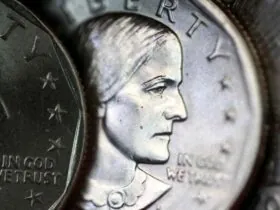Not every old coin holds significant value, but many coins from the 1800s are worth thousands, or even millions, of dollars today. Much of this value stems from their rarity and historical significance. Coins with low mintages or unique characteristics often attract the keen interest of numismatists—collectors of coins—who prize them for their scarcity and beauty. Whether you’ve inherited a coin collection or stumbled across an old coin in an unexpected place, understanding its potential worth can be an exciting journey.
The Role of Low Mintage in Coin Value
This Article Includes [hide]
A coin’s rarity is often tied to its original mintage numbers. Coins produced in limited quantities are inherently rarer, and if they survive in excellent condition, they can become highly sought after. Additionally, historical events, such as coins being melted down or lost, can further reduce the number of surviving specimens, driving up their value.
Rare and Valuable Coins from the 1800s
Below are some of the most remarkable and valuable coins from the 19th century, each with a unique history and exceptional value.
1822 American Half Eagle (PCGS AU-50)

- Approximate Number Minted: 17,796 (regular strike)
- Composition: 91.67% gold, 8.33% copper
Although nearly 18,000 of these $5 gold coins were struck, only three are known to exist today. Two are housed in the Smithsonian Institution, making the remaining privately held coin extraordinarily rare. The last known sale was to Louis Eliasberg in 1945 for $14,000, a fraction of what it would be worth today.
1878-S Trade Dollar (PCGS MS68)

- Approximate Number Minted: 4,162,000 (San Francisco Mint)
- Composition: 90% silver, 10% copper
While millions of these coins were minted, it is believed that a significant portion was melted down in the mid-20th century. Mint State examples, especially those in pristine condition, are highly coveted. In 2019, one sold for $252,000 at auction, highlighting its enduring appeal among collectors.
1861 Paquet Liberty Head Double Eagle (MS-67 CAC)

- Approximate Number Minted: 2,976,453
- Composition: 90% gold, 10% copper
The Paquet Liberty Head Double Eagle stands out for its rarity and historical significance. A handful were recovered from the wreck of the S.S. Central America, further enhancing their mystique. One of these coins fetched $352,500 at auction in 2013.
1838 $10 Liberty Head Gold Eagle (PCGS MS-63)

- Approximate Number Minted: 7,200
- Composition: 90% gold, 10% copper
This coin’s low mintage makes it particularly rare. In 2007, a specimen in Mint State-63 sold for $115,000, demonstrating its lasting desirability among numismatists.
1880 $4 Coiled Hair Stella (PCGS PR67 CAMEO)

- Approximate Number Minted: 10
- Composition: 86% gold, 10% copper, 4% silver
The $4 Coiled Hair Stella is among the rarest U.S. coins, with only 10 known examples. In 2015, one sold for an astonishing $1.8 million. This coin’s design and scarcity make it a cornerstone for high-end collectors.
1804 Draped Bust Dollar (PCGS PR68 Class 1)

- Approximate Number Minted: 8
- Composition: 90% silver, 10% copper
Often referred to as the “King of American Coins,” the 1804 Draped Bust Dollar is legendary. Despite records of nearly 20,000 silver dollars being struck in 1804, most were likely dated 1803. Only eight Class 1 examples exist, one of which sold in 2021 for an astounding $7.6 million.
How to Identify Rare Coins
Not every old coin is valuable, but there are key features to look for when determining its rarity and worth:
- Mintmarks and Dates: Check for unusual mintmarks or date errors, such as re-punched marks or doubled text.
- Lettering and Details: Inspect the coin’s lettering for anomalies, like missing or doubled letters.
- Die Rotation: Examine how the coin’s obverse and reverse align. An incorrect rotation can indicate a rare minting error.
- Condition: Coins in pristine condition (e.g., uncirculated or proof) are typically more valuable than heavily worn specimens.
- Professional Appraisal: Seek a local coin dealer or certified appraiser to evaluate your coin’s authenticity and potential value.
Selling Rare Coins
If you own a rare coin and wish to sell it, consider auctioning it through reputable platforms such as Stack’s Bowers, David Lawrence Rare and Certified Coins (DLRC), or USA Coin Book. Proper appraisal and grading are essential steps to ensure you receive fair market value.
Conclusion
The coins of the 1800s hold immense historical and monetary value, especially when they are rare and well-preserved. Whether you’re a seasoned collector or a curious beginner, understanding the rarity and history behind these coins can help you appreciate their true worth. Keep an eye out for unique characteristics, and don’t hesitate to consult an expert to unlock the potential value of your treasures.
Also Read:
THIS IS ONLY A BLOG POST FOR INFORMATION – WE DO NOT BUY, SELL, OR APPRAISE THESE ITEMS







Leave a Reply